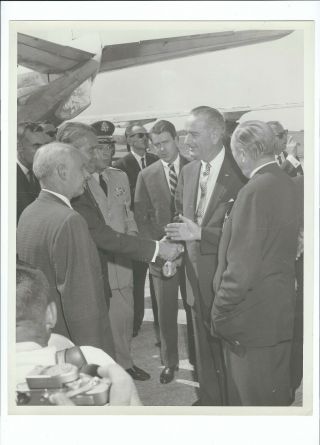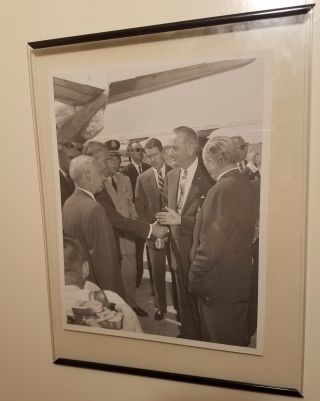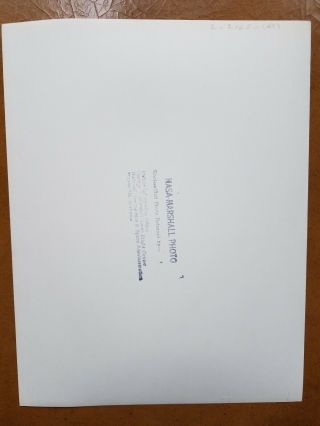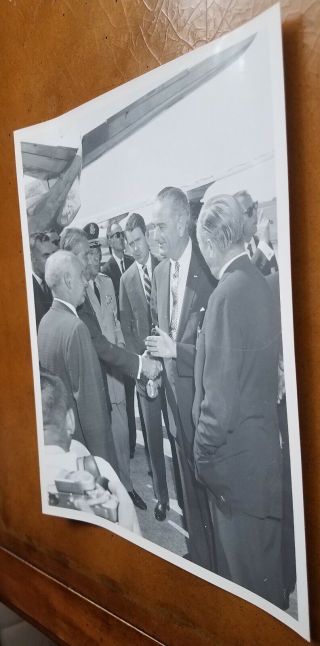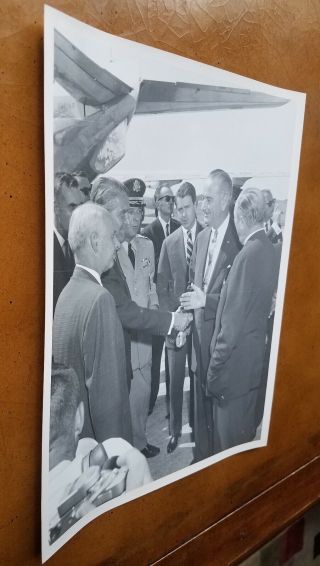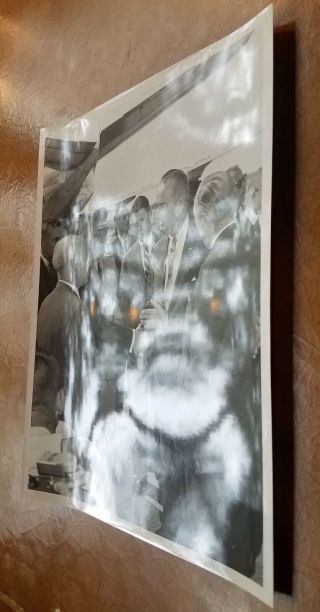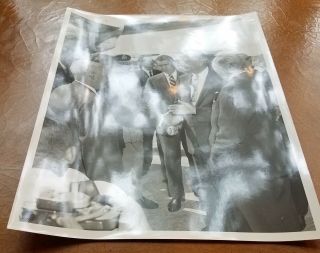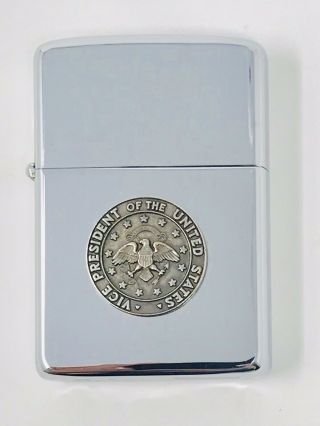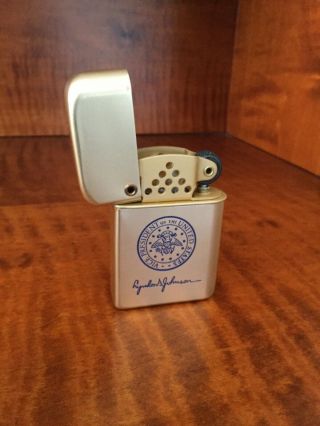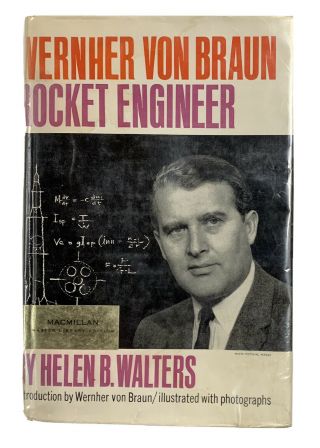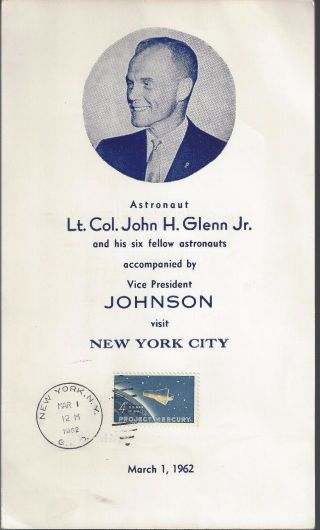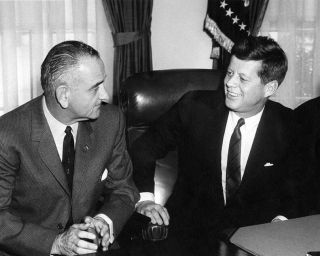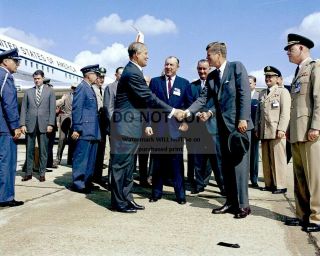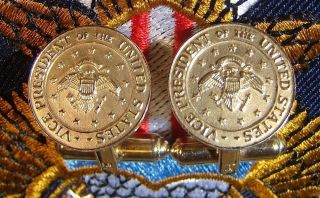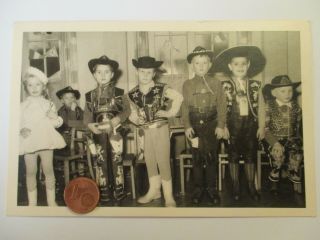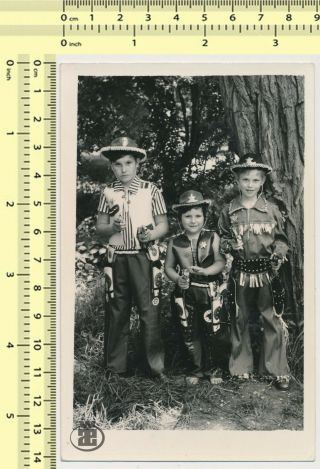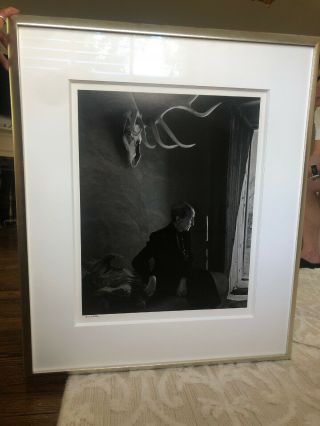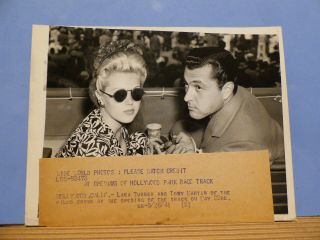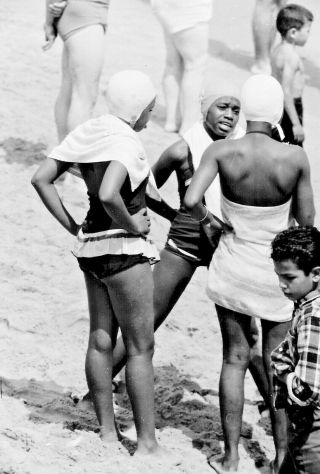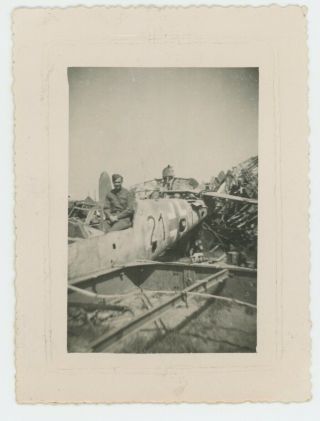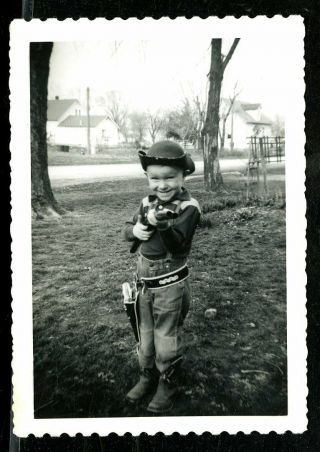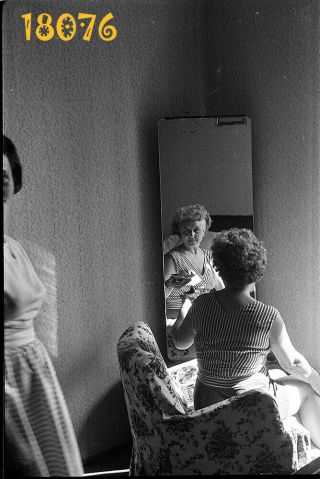Wernher Von Braun Greets Vice President Lyndon B. Johnson - NASA Photo
Item History & Price
...I rate this vintage photo in FAIR condition and have included the Ratings & Definitions in the following sections. Also, please read the Photograph Condition Report details of my inspection in the 5th highlighted section to follow.
I'm liquidating my parent's space memorabilia they acquired in the 1960s and 1970s, during which they were employed with IBM Huntsville, Northrup and Redstone Arsenal and during corporate collaboration with NASA and the Marshall Space Flight Center in Huntsville, Alabama.
I will ship the photo enclosed in a rigid cardboard insert for protection against bending. I ship within 1 business day of payment received and most often ship same day. Please inspect the images carefully and read the details of the condition of this photograph. Also, watch for my other NASA listings from this collection and thank you for your interest!
-----------------------------------------------------------------------------------------------------------------------------------------------------------------------------Print Condition Ratings & DefinitionsCondition is always difficult to assess and somewhat subjective. Rating system is an effort to make a meaningful distinction between the found condition of photographs that are, in 2019, between 45 and 60 years old. There are no standards in the industry or bright lines between ratings. I attempt to be detailed, clear, and consistent in my assessment of the condition of photographs, but cannot guarantee that sharper eyes will not find things I miss. My condition explanations at first glance, can be disconcerting, even when the condition is rated as "Excellent". My rating depends on how visible damage is to me under the conditions defined. Therefore it is possible that a number of flaws that are barely visible in glaring light can look more severe on my condition report, where if you viewed the photograph in person, you might not even note the flaws. Also, some types of surface damage are most likely to have happened in the developing process. A small wrinkle in the emulsion layer, or etching a dark spot in a light sky are two examples. When this occurs I do my best to note it.
My Photograph Inspection ProcessFirst I frame the the photograph between glass and mount. I view it on the wall illuminated by a 100W halogen spotlight angled at 35-45 degrees, simulating gallery lighting. I inspect the photo at 24" or greater (Normal Viewing-No Glare). I then inspect it at less than 24", straight on, and at angles (Inspection-No Glare). I then remove the photo from the glass and inspect under specular light (Close Inspection-With Glare). I look for flaws that are noticeable to me under this micro condition where light accentuates the flaws. Based on my observations and the guidelines listed in the "Print Condition Rating" and "Viewing Conditions", I give the photo an overall rating. I then include an outline of my inspection findings in the "Photograph Condition Report" located 3 paragraphs below. Please review the following definitions for more detail.
Photograph Print Condition Ratings DefinedPristine - Absolutely no damage to the print surfaceExcellent - Minor flaws or damage to print surface, visible ONLY under close inspection in specular lightVery Good - Minor flaws or damage to print surface, visible upon inspection under standard gallery lighting conditionsGood - Flaws or damage that draws the eye under normal viewing conditions once known or seenFair - Flaws or damage immediately apparent under normal viewing conditions
Viewing Conditions DefinedNormal Viewing Conditions - Standard gallery lighting conditions (normal viewing light), lighting at 25-55 degree angle from print surface, on wall and under glazing, viewing straight on from 2 feet or more from printInspection - Standard gallery lighting conditions (normal viewing light), lighting at 25-55 degree angle from print surface, on wall and under glazing, viewing straight on or at angle from 24" or less distance from print.Close inspection - Out of frame and handling, viewing in specular and raking light, normally 6-24" distanceSpecular light - Glare of reflected light, best light for locating and identifying surface condition issuesNormal viewing light - No glare, bright for viewing image and tonality------------------------------------------------------------------------------------------------------------------------------------------------------------------------------------------------------------------------------------------------------------Photograph Condition ReportOverall Rating: FAIR (overall impression is - though a fine image captured and looks OK framed, there seems to have been little attention to detail/quality control during photo processing)
Normal Viewing: Horizontal, hairline scratch, edge to edge in middle of photo. Dust particles, 2 measuring 3mm in jackets of observers. Appears to have happened at photo processing. **I have included a scanned image, a picture of the photo behind glass, and a non-glare picture of the photo out of glass to show Normal Viewing results.
Inspection: 3 additional hairline scratches 15mm into image from white margin behind Von Braun's head. Additional dust particles noticeable.
Close Inspection, Specular Light: Wipe Marks: Horizontal below plane tail-wing from left edge to right edge; Horizontal 40mm on left tail-wing.Horizontal + 2 diagonal; Across LBJ's brow/ear; point at LBJ's collar extending up across adjacent observer's forehead/head, and down 20mm into LBJ's lapel; 120mm diagonal from margin to margin in lower left corner. Dust particles throughout image.White margins: 20mm bend upper-left corner. Grouping of 5-3mm indentations upper right margin. 20mm crescent bend right margin edge. Bend lower right margin extending 15mm into image.
------------------------------------------------------------------------------------------------------------------------------------------------------------------------------------------------------------------------------------------------------------Additional DefinitionsPrint LayersPrint Surface Top of emulsion layer. often collects dust, outgassing, films of extremely fine deposits, very fine scratches and marks that may be professionally cleaned by a conservatorEmulsion Layer Image layer, consisting of silver particals in a gelatin binder. Very thin. Delicate during processing, although much more durable after selenium toningSupport Layer Fiber paper layer that supports emulsion layer
Common Condition TermsSpotting Deposit of ink, intentionally done, to darken an area on the print. Can be a result of dust on the negative or paper during printing, or similar light blocking anomaliesEtch & Spot Intentional removal of emulsion layer and subsequent coloring of substrate, performed to remove dark spots in light areasWet Paper Crease / Crimp Crescent shaped variation in surface topography, typically a result of handling a print prior to drying or mountingWet Paper Wrinkle Wrinkle in emulsion layer, happens during print processing.Wipe Marks Multiple linear blemishes, very fine, running parallel, as from a dusting cloth.Thumbnail Scrape Shallow, wide, light impression on surface, as from the flat edge of a fingernail. More often a change in texture and reflectivity rather than change in topographyIndentation Point or linear mark of varying intensity, soft edged, with no break in the emulsion layerScratch Point or linear mark of varying intensity, hard edged, with no break in the emulsion layerCut Point or linear mark of varying intensity, hard edged, with break in emulsion layerRolling Grit Multiple point indentations in a line. Typically caused by grit between print surface and surface above rolling when surfaces shift relative to each otherCompression Mark / Area Change in general thickness of paper and or mount, with defined but not necessarily sharp linear edgeAccretion/Deposit/Deposition Foreign substance on surface of print. Typically can be removed, although how easily is not easy to determinePolishing / Burnishing Area of significantly smoother surface with greater reflectivityRubbing Area of surface texture difference, lower reflectivity due to roughing top emulsion layerAbrasion Area of surface texture and topography difference, may include scratches and scuffs, but no emulsion loss or break in emulsionScouring Area of surface texture and topography difference, may include cuts and scrapes, with some loss of or break in emulsionEmulsion Loss Absence of emulsion layer, exposed substrate. By definition variation in surface topography.Edge Chip Loss of emulsion at the edge of print, exposes substrateEdge Bang Lifting or compression of emulsion, possibly with substrate, along edge of printCorner Bang Lifting of emulsion from substrate in corner of print. Sometimes includes loss of emulsionTissue Release Area of print lifting from mount, commonly near the edge.Tunneling Areas of print lifting from mount, typically not near the edge. Creates large bubbling effect.Foxing Growth of mildew on surface of print. Typically round, can often be removed with conservation, sometimes leaves a mark. Foxing on mount commonly yellow brownSilvering Aging and oxidation. Dark areas develop reflective ?silver? sheen, often accompanied by a sepia colored staining. Sheen can typically be removed, staining more difficultPatina Discoloration, normally sepia in tone, due to oxidiation, age, or extended contact with acidic surfaces. Sometimes a remnant of silvering. Can vary in both intensity and coverage.
Common Variations in IntensityPoint ConditionsPoint blemish Point mark on surface layer, affecting surface texture, but no noticeable change in surface topography. Generally ranges in size from pin point to pencil leadPoint Impression Point mark in emulsion layer, with noticeable variation in surface topography. Possibly deeper than emulsion layer, but no loss or break in emulsionIndentation Point indentation, noticeably deeper than emulsion layer, with no loss of emulsion or break in emulsion surfaceNick Point indentation, shallow, with loss of emulsion or break in surfacePit Point indentation, well into support layer, with loss of emulsion or break in surface
Linear ConditionsLinear blemish Continuous point blemish on surface layer, very fine, affecting surface texture, but no noticeable change in surface topographyIndentation Linear indentation in emulsion layer, with noticeable variation in surface topography. Soft edge, with no loss or break in emulsion. Generally shallowGradations of indentations The eye can see a much finer variation than can reasonably be measured, therefore our use of common analogies rather than actual measurementsVery fine Extremely narrow, barely visible under close inspection is specular light, as from dust on a non-abrasive surfaceHairline Human hair thickness, also similar to a fine grain of sandModerate Similar in thickness to copy paperHard Similar in thickness to standard business cardsGouging Ball point pen thickness or widerScratch Linear indentation in emulsion layer, with noticeable variation in surface topography. Hard edge, with no loss or break in emulsionGradations of scratches The eye can see a much finer variation than can reasonably be measured, therefore our use of common analogies rather than actual measurementsFine Very narrow, readily visible under close inspection in specular light, as from the very tip of a razor bladeHairline Human hair thicknessModerate Similar in thickness to copy paperHard Similar in thickness to standard business cardsGouging Lifting cuts as from broken glass
Area ConditionsScuff Linear mark on surface, with width. No noticeable variation in surface topography in raking light. Typically changes reflectivity of surfaceScrape Linear mark on surface, with width. Noticeable variation in surface topography, but does not break emulsion surfaceImpression Area of irregular indentation on surface, typically deeper than emulsion layer, but does not break emulsion surfaceGraze Area of irregular indentation on surface, shallow, including loss of emulsion or break in surfaceGouge Area of irregular indentation on surface, including loss of emulsion or break in emulsion surface.
An Adaptation from: The Ansel Adams Gallery (www.anseladams.com).




